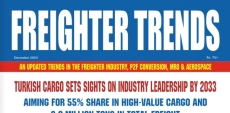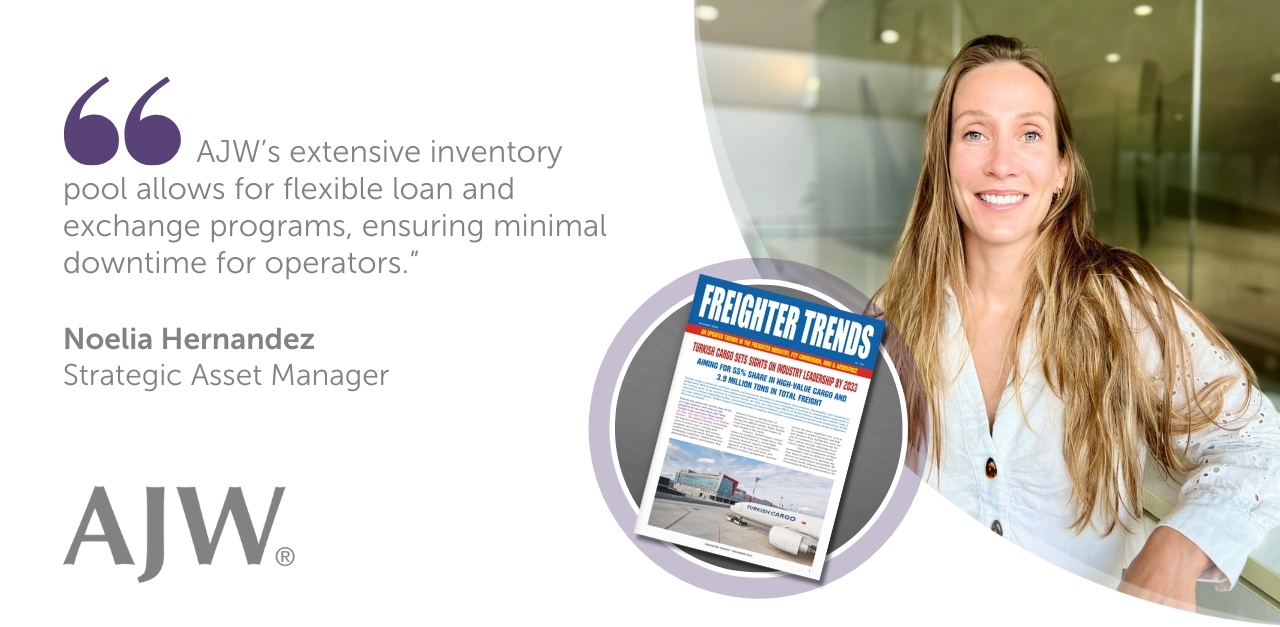

24/7 AOG Critical Response
Hotline![]() UK +44 1403 798888US +1 877 780 2008
UK +44 1403 798888US +1 877 780 2008
Our award winning global AOG service is manned 24 hours a day, 365 days a year.
Please call +44 1403 798888 or email aog@ajw-group.com.

8 Jan 2025

APUs are sophisticated components that involve various mechanical, electrical, and electronic systems. The complexity of maintaining these systems contributes significantly to maintenance costs. How are aviation MRO and asset management companies helping their customers manage the cost of APU maintenance? Freighter Trends Magazine investigates.
In this deep dive article, Freighter Trends Magazine speaks to Noelia Hernandez, Strategic Asset Manager at AJW Group, about APU maintenance costs, and how companies like AJW are navigating the current market to maximise efficiency for their customers.
Enquiring about the primary reasons behind APU maintenance costs, Freighter Trends asks how these costs can be effectively managed.
Hernandez shares that AJW Group sources APUs through various channels, including aircraft teardowns, spare packages, and surplus market opportunities. “By focusing on younger aircraft with relatively low utilisation hours, we can acquire APUs in serviceable condition, minimising the need for reducing maintenance costs,” she adds.
What challenges are faced when using OEM parts versus USM in APU maintenance?
“As an APU supplier, we have observed a growing trend in the acceptance of USM components for APU maintenance,” says Hernandez. “While OEM parts provide the assurance of being new, USM components offer a compelling alternative, especially when considering the extended lead times and higher costs associated with OEM parts.”
Hernandez affirms that this growing acceptance within the aviation industry is allowing airlines to optimise maintenance schedules, reduce costs, and minimise aircraft downtime.
When asked her opinion on the trend towards more electrification in newer aircraft, AJW Group’s Strategic Asset Manager states that it will undoubtedly impact the role of APUs. Elaborating, she predicts that “while APUs will remain crucial for critical functions like engine starting and emergency power, their usage may decrease as aircraft become more electrified and the need for APU-powered functions, such as cabin cooling, may diminish.”

How are operators adapting to supply chain challenges?
Hernandez believes that all industry stakeholders are facing significant supply chain challenges, with both new and used parts becoming increasingly scarce.
Expanding, she says that “to navigate these issues, airlines are turning to strategic planning and partnerships with established suppliers such as AJW Group, which specialise in comprehensive inventory management.”
“AJW’s advanced inventory management systems are designed to integrate demand forecasts for new contracts, ensuring we procure stock ahead of contract start dates. This proactive approach helps us mitigate the risk of sudden adjustments due to shifts in demand or supply,” Hernandez adds.
Finally, Freighter Trends asks what practices experts would recommend to airlines for scheduling APU maintenance to balance both safety and cost-effectiveness.
“It is important that operators follow a structured maintenance plan” replies Hernandez. “This should combine the manufacturer recommended intervals, as well as on condition-based monitoring. We’re also seeing a growing trend among MROs to utilise advanced live data software systems. These systems enable real-time monitoring of engine health, allowing for early detection of potential issues and preventing future damage.”
“By levering these technologies, operators can make informed decisions and reduce the risk of unexpected failures and optimise maintenance costs. AJW’s extensive inventory pool allows for flexible loan and exchange programs, ensuring minimal downtime for operators, and access to both OEM and high-quality USM parts,” she concludes.